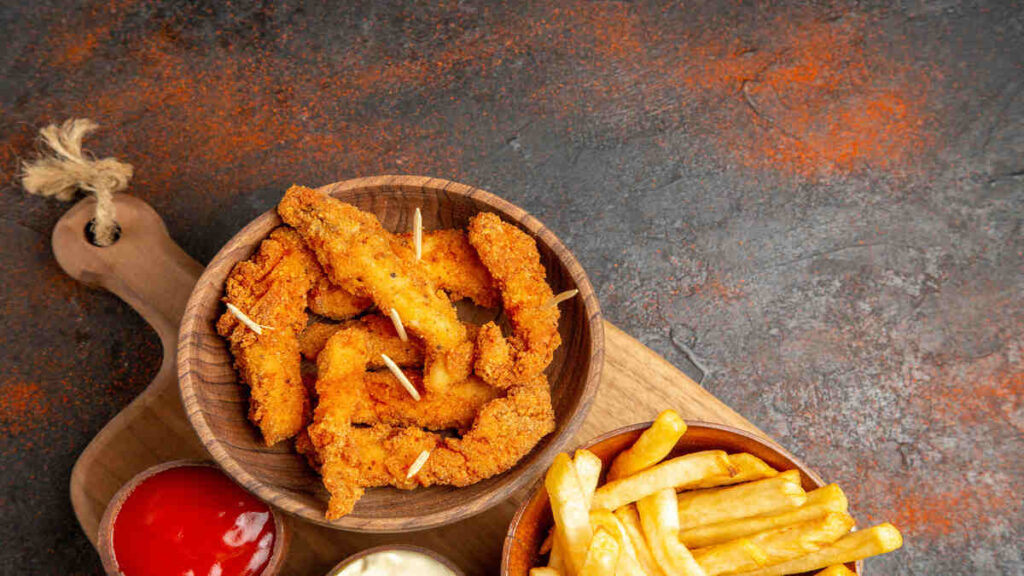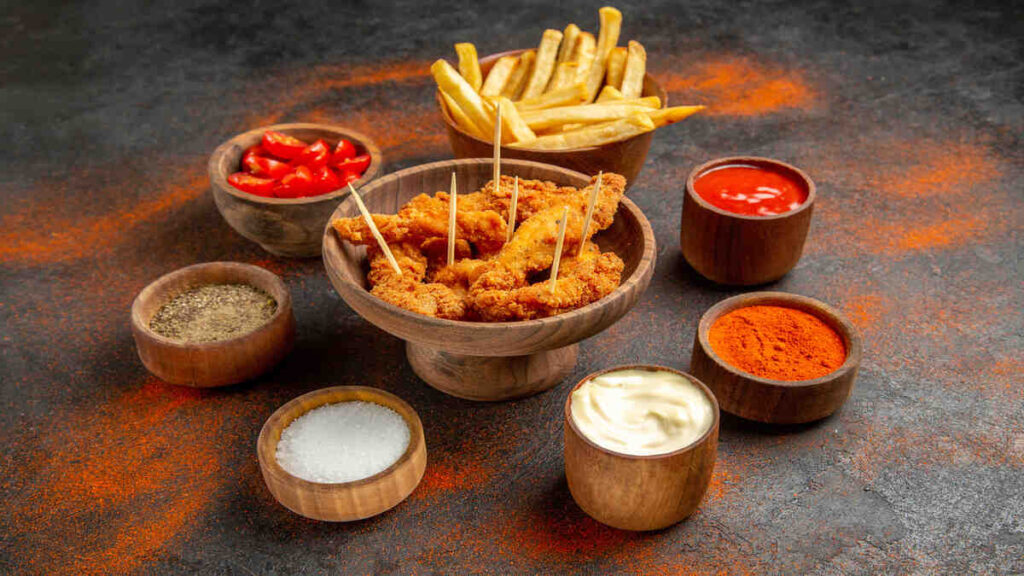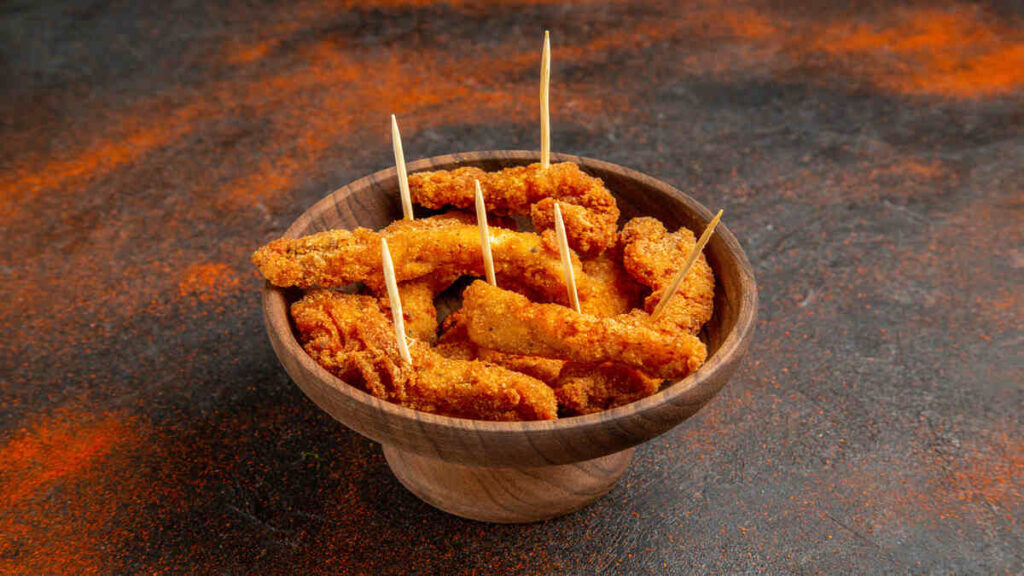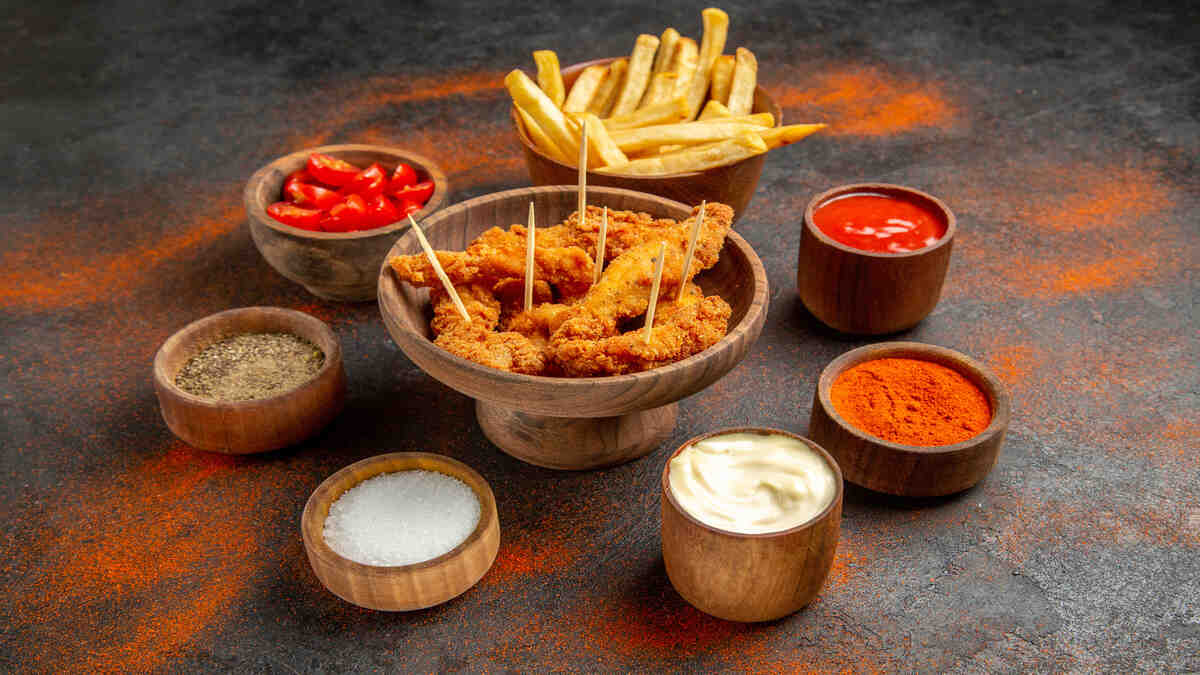Introduction
Chicken tenders are a classic comfort food that many people adore. Whether they’re served at a family dinner, as part of a fast-food meal, or at a local restaurant, chicken tenders have gained widespread popularity across the globe. But, are chicken tenders considered a “food analog”? Let’s dive deeper into what exactly this term means and how chicken tenders might fit into it.

What is a Food Analog?
A food analog refers to a food that is designed to mimic the taste, texture, or appearance of a different food. This concept is most commonly associated with plant-based or lab-grown alternatives to traditional animal products. For instance, a veggie burger might be considered a food analog to a traditional beef burger.
However, when it comes to chicken tenders, the term food analog can be a bit more nuanced. Chicken tenders themselves are not exactly food analogs in the traditional sense (like plant-based “chicken” alternatives), but their role in modern cooking and convenience food culture has sparked some interesting debates.
Origin of Chicken Tenders
Chicken tenders, also known as “chicken fingers,” “chicken strips,” or “chicken nuggets,” trace their roots back to the United States, where they became a popular fast-food item in the mid-20th century. They’re believed to have originated from the need for a fast, easy-to-prepare chicken dish that’s both portable and kid-friendly.
While the exact origin of chicken tenders is debated, they are widely considered a derivative of fried chicken, with the tender meat from the chicken breast being breaded and deep-fried for a crunchy, satisfying bite.
Ingredients for Chicken Tenders
The basic ingredients for traditional chicken tenders include:-
- Chicken tenders or chicken breast fillets – Typically, boneless and skinless chicken breast or tenderloins are used.
- Flour – For coating the chicken before frying.
- Breadcrumbs – Often seasoned, they create a crunchy coating around the chicken.
- Eggs – For binding the breadcrumbs to the chicken.
- Seasonings – Salt, pepper, garlic powder, onion powder, paprika, and other spices.
- Oil – For frying the tenders, such as vegetable oil, canola oil, or peanut oil.
Essential Equipment for Making Chicken Tenders
To prepare your chicken tenders, you’ll need the following equipment:-
- Frying pan or deep fryer – For cooking the chicken.
- Shallow bowls – For dredging the chicken in flour, eggs, and breadcrumbs.
- Tongs or a slotted spoon – To handle the chicken tenders safely.
- Paper towels – For draining excess oil.
- Thermometer (optional) – To ensure the oil is at the right temperature for frying.
Step-by-Step Preparation of Chicken Tenders
Making chicken tenders is a straightforward process. Follow these easy steps to prepare a batch:-
- Prepare the Chicken
- Start by cutting the chicken breast into long strips or use pre-cut chicken tenders. Season with salt, pepper, and any other desired spices.
- Dredge the Chicken
- Set up a dredging station with three shallow bowls. In the first bowl, add flour and season it with salt, pepper, and any spices. In the second bowl, beat one or two eggs. In the third bowl, place breadcrumbs (panko breadcrumbs work well for extra crunch). Dredge each chicken strip in flour, then dip in the egg, and coat with breadcrumbs.

- Heat the Oil
- Heat oil in a deep fryer or frying pan to 350°F (175°C). Use a thermometer to ensure the oil is at the correct temperature to fry the tenders properly.
- Fry the Chicken Tenders
- Carefully place the coated chicken tenders in the hot oil. Fry for about 4-5 minutes, turning occasionally, until the tenders are golden brown and crispy. Make sure the internal temperature of the chicken reaches 165°F (74°C).
- Drain and Serve
- Remove the chicken tenders from the oil and place them on paper towels to drain excess oil. Serve them hot with your favorite dipping sauce, such as honey mustard, ranch dressing, or barbecue sauce.
Health Benefits of Chicken Tenders
While chicken tenders are undeniably tasty, they do have some health benefits when consumed in moderation:-
- High in Protein – Chicken is an excellent source of lean protein, which is essential for muscle growth, tissue repair, and overall bodily functions.
- Rich in Vitamins and Minerals – Chicken provides important nutrients like B vitamins (especially niacin and B6), which help support metabolism and nervous system health.
- Low in Carbohydrates – The basic chicken tender recipe is low in carbs (especially if you skip the breading), making it a good option for low-carb or ketogenic diets.
However, keep in mind that deep-frying can add significant calories and fat. Opting for oven-baked or air-fried chicken tenders can be a healthier alternative.
Additional Information About Chicken Tenders
- Alternative Cooking Methods: While chicken tenders are traditionally fried, you can also bake or air-fry them for a healthier option. Simply coat them in breadcrumbs and bake at 400°F for about 20 minutes or air-fry for 10-12 minutes.
- Gluten-Free Option: For those with dietary restrictions, gluten-free breadcrumbs can be used to make gluten-free chicken tenders.
- Flavor Variations: You can add different seasonings to your chicken tenders to create different flavors. For example, try a spicy version with cayenne pepper or a savory version with Italian herbs.
Best Way to Serve Chicken Tenders
Chicken tenders are incredibly versatile and can be served in a variety of ways:-
- With Dipping Sauces: Serve your tenders with honey mustard, ranch dressing, barbecue sauce, or even a spicy sriracha mayo.
- In Sandwiches or Wraps: Place your chicken tenders in a soft bun or wrap with fresh vegetables and a creamy sauce for a delicious sandwich or wrap.
- As a Side Dish: Pair chicken tenders with mashed potatoes, coleslaw, or a fresh salad for a well-rounded meal.
Calories in Chicken Tenders
The calorie content of chicken tenders depends on how they are prepared and the ingredients used. Here’s an approximate breakdown for traditional deep-fried chicken tenders:-
- Chicken tenders (3 pieces) – Around 300-350 calories
- Dipping sauce – 50-100 calories per serving, depending on the type
Total Calories (Approx.): A serving of 3 chicken tenders with dipping sauce could range from 350 to 450 calories.
Preparation Time and Cook Time

- Preparation Time: 15 minutes
- Cook Time: 15 minutes (for deep frying)
Conclusion: Chicken Tenders as a Staple Comfort Food
Chicken tenders may not be classified as a food analog in the strictest sense, but they certainly fit into the category of comfort food that has evolved with time. Whether enjoyed as a quick snack, a meal for the family, or part of a larger menu, chicken tenders remain a beloved dish worldwide. By using the right ingredients, cooking methods, and seasoning, you can make these crispy treats to suit any dietary preference or occasion.
FAQs About Chicken Tenders
1. Can I make chicken tenders without breadcrumbs?
- Yes, you can make chicken tenders without breadcrumbs by using crushed cornflakes, panko breadcrumbs, or even crushed almonds for a different texture.
2. Are chicken tenders healthy?
- Chicken tenders can be healthy if baked or air-fried rather than deep-fried. Choose lean cuts of chicken and avoid excess oil or heavy breading.
3. Can I make chicken tenders ahead of time?
- Yes, you can prep the chicken tenders in advance and store them in the fridge until you’re ready to cook them. They can also be frozen for longer storage.
4. How do I know when the chicken tenders are fully cooked?
- The internal temperature of the chicken tenders should reach 165°F (74°C) to ensure they are fully cooked. A meat thermometer can help with this.
5. Can I use chicken breasts instead of chicken tenders?
- Yes, chicken breasts can be sliced into strips and used as a substitute for chicken tenders.
For more dishes like this look here : – recipehubtoday.com
